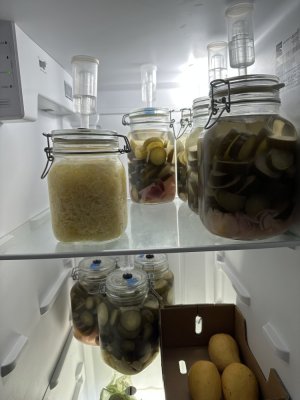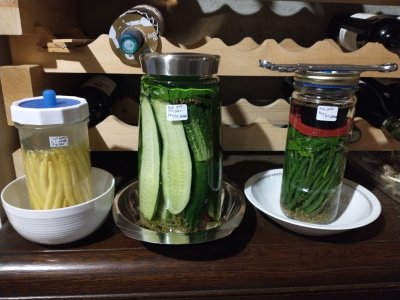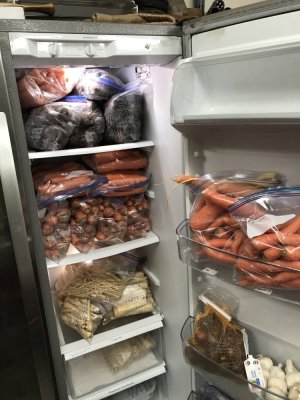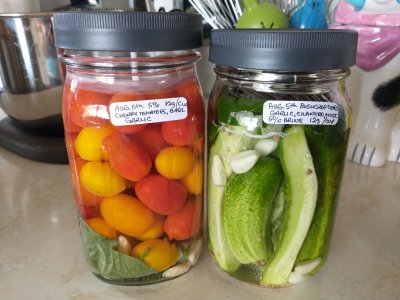Ruthy says she uses 5% brine for cukes ans 2/3% for the beets/carrots. Im not sure what we use for Kraut but with all this stuff; we learned these are good starting points, not absolutes! She only uses Himalayan salt these days and we quit the pickle pipes in favor of the air lock jars. And everything is kept refrigerated, although we’ve wondered about the root cellar idea.We are growing quite a number of different pickling cucumbers this year, and hope to ferment some of those too. I have seen different ratios of salt mentioned for cucumbers, ranging from 3.5-5% salt in the solution. How much salt do you use Alasgun? And do you store your fermented cucumbers in a root cellar over the winter? We have a nice cool, dark basement that may be just right for storing a large jar of ferment.
Also, I found someone who posted a brine calculator on their site, which may be helpful:
Brine salt percentages by vegetable: https://myfermentedfoods.com/tools/brine-calculator/
I was unaware that different vegetables required different ratios of salt in the brine. Here are some of the personal recommendations from My Fermented Foods:
2%- beets, carrots, green beans, or turnips
2-3%- peppers
3.5%- okra
3.5-5%- cucumbers
5%- radish
5-6%- asparagus, giardiniera
10%- olives 10%
the top shelf is the beginning of this years stock, the second shelf is the remainder of last years. And that one lone Kraut is from last year.
Also, we only grow Sweet Success cucumbers (a slicer) and found they do just fine as a ferment.




